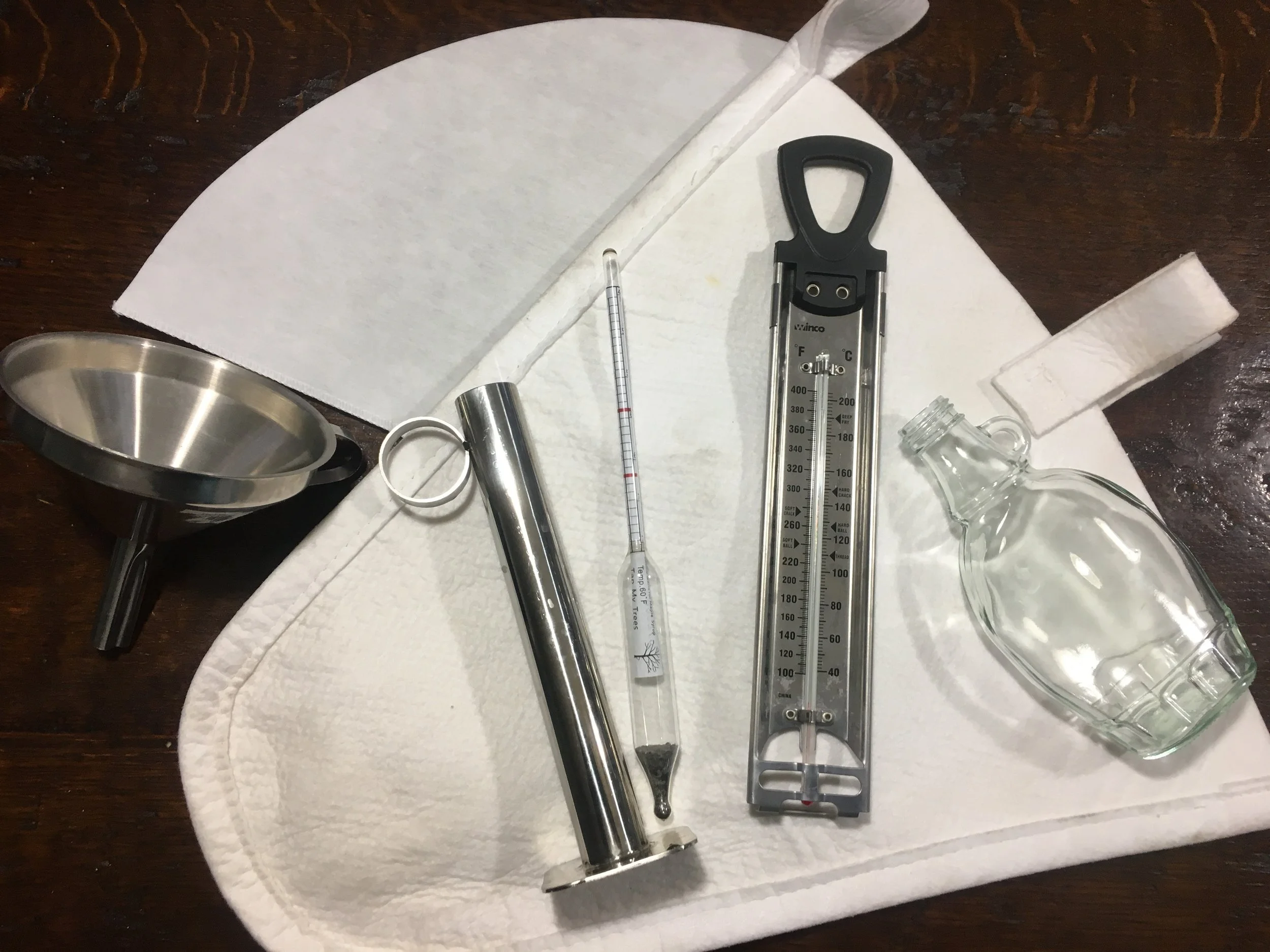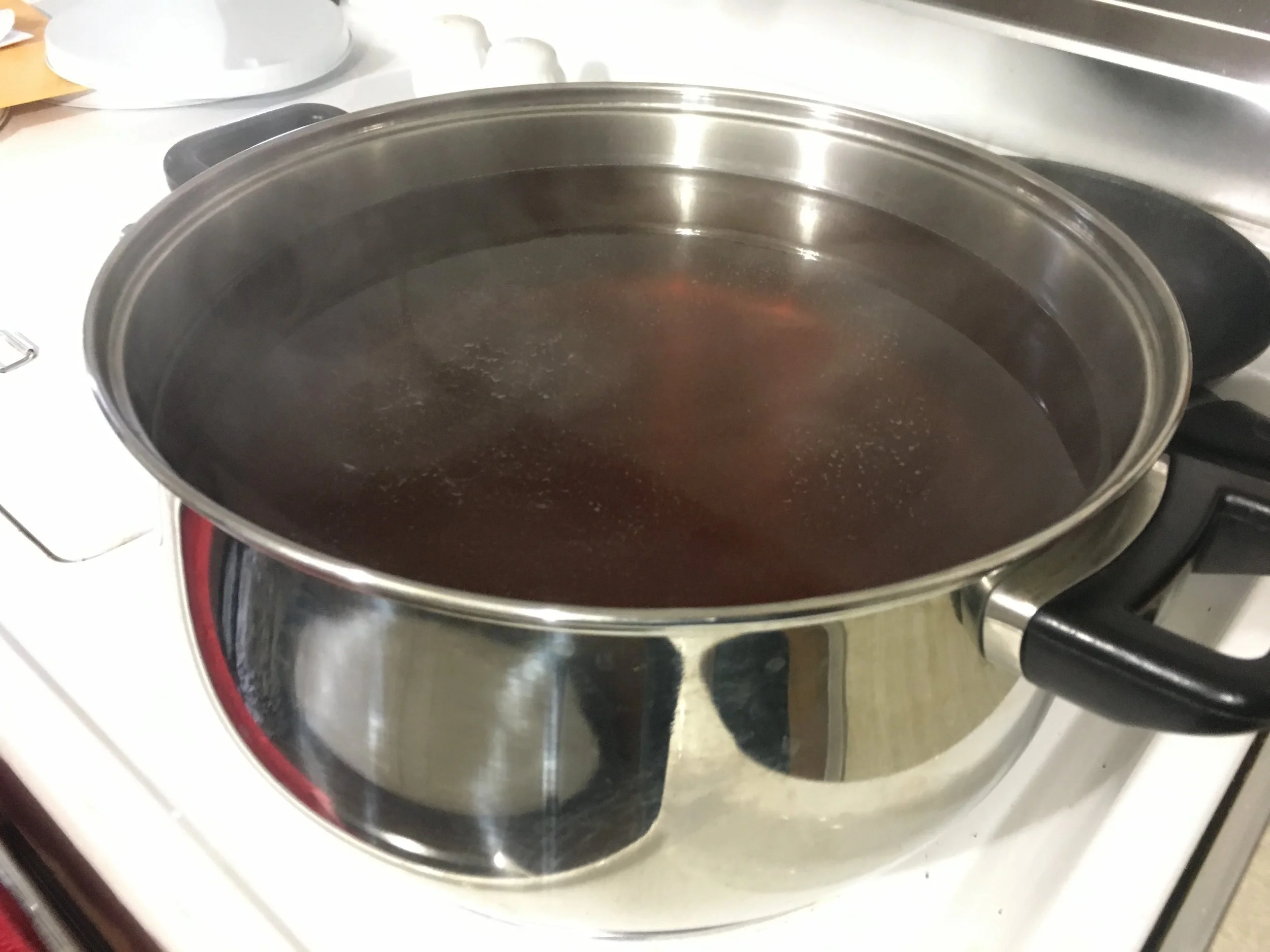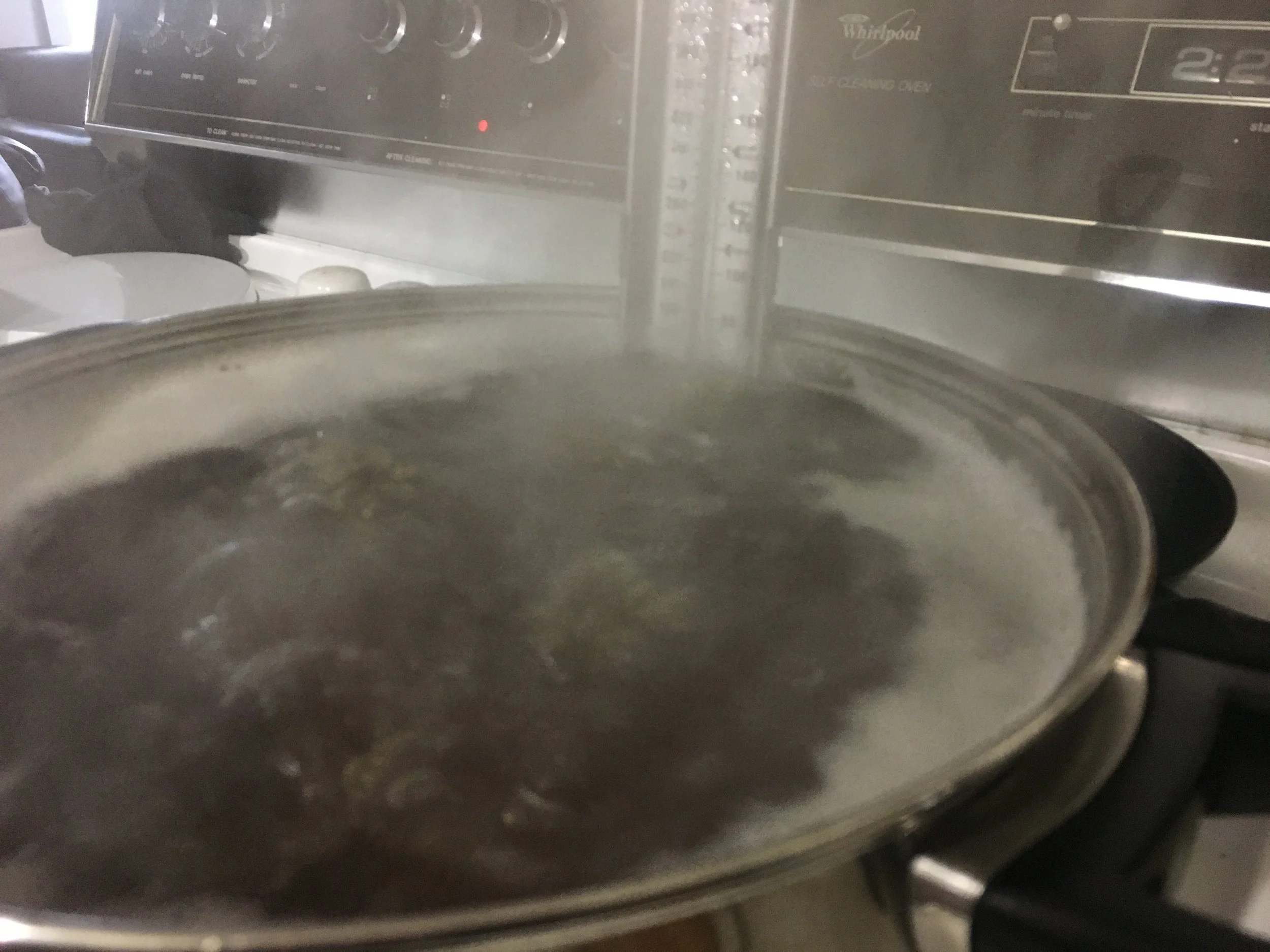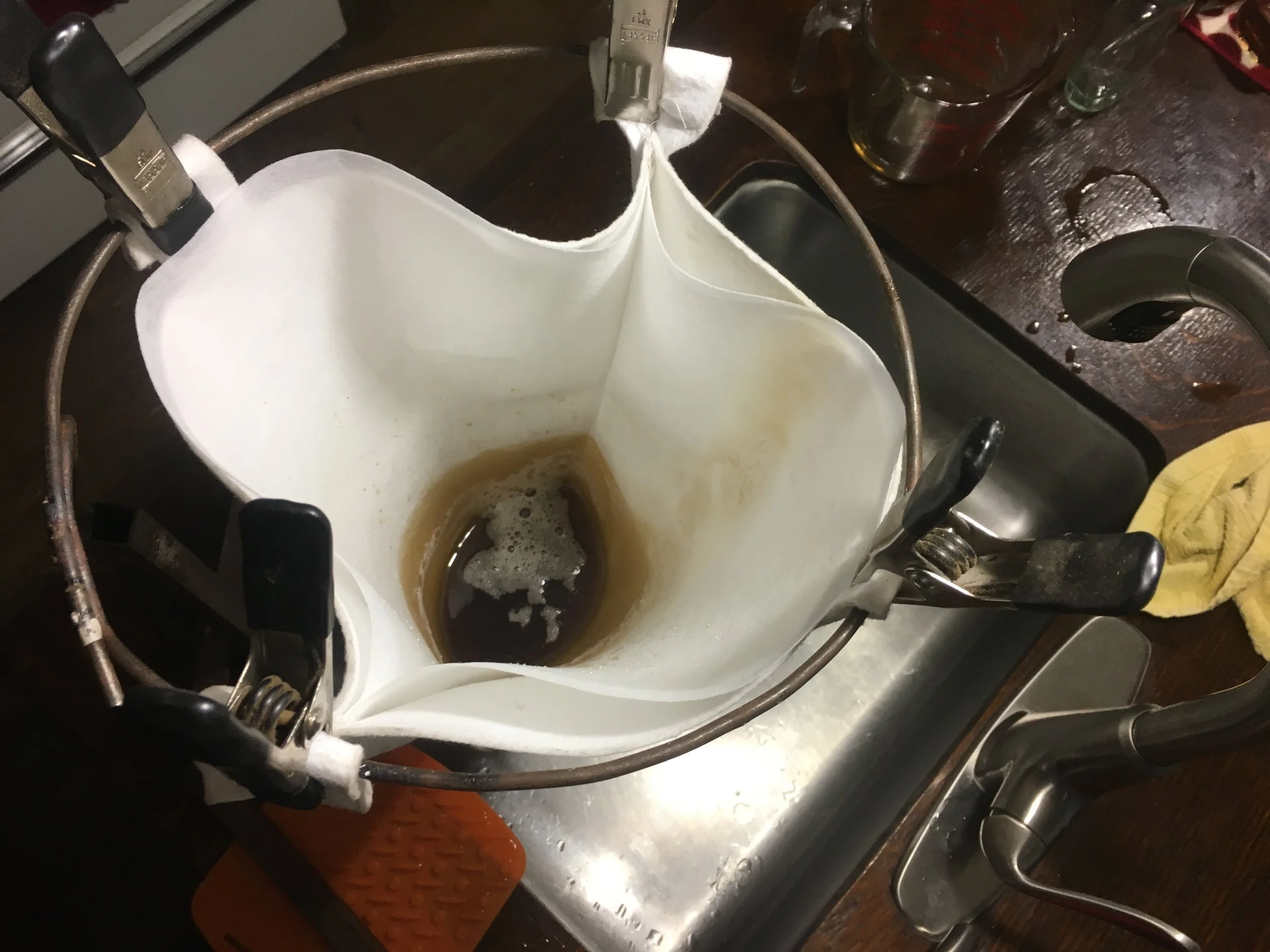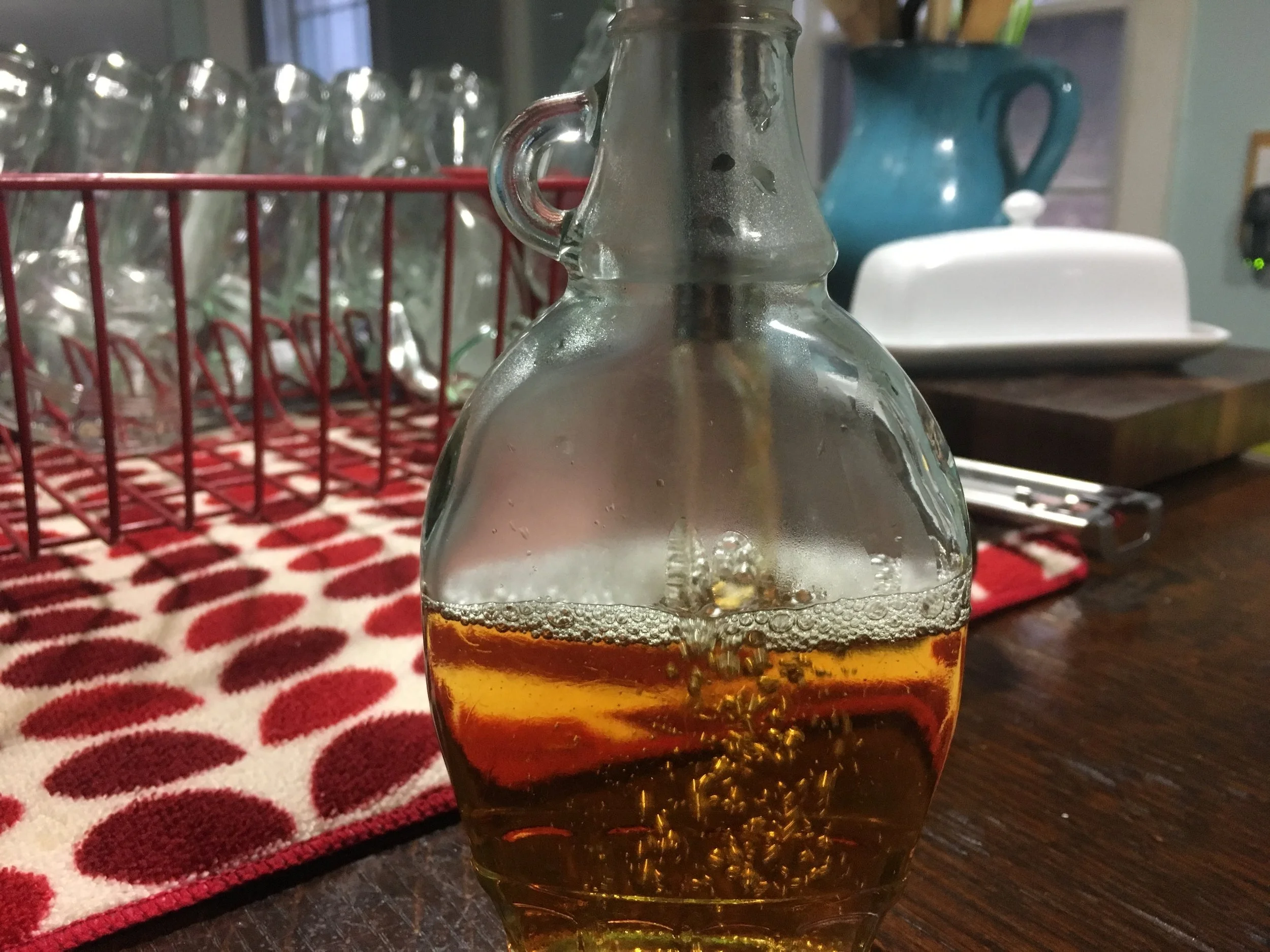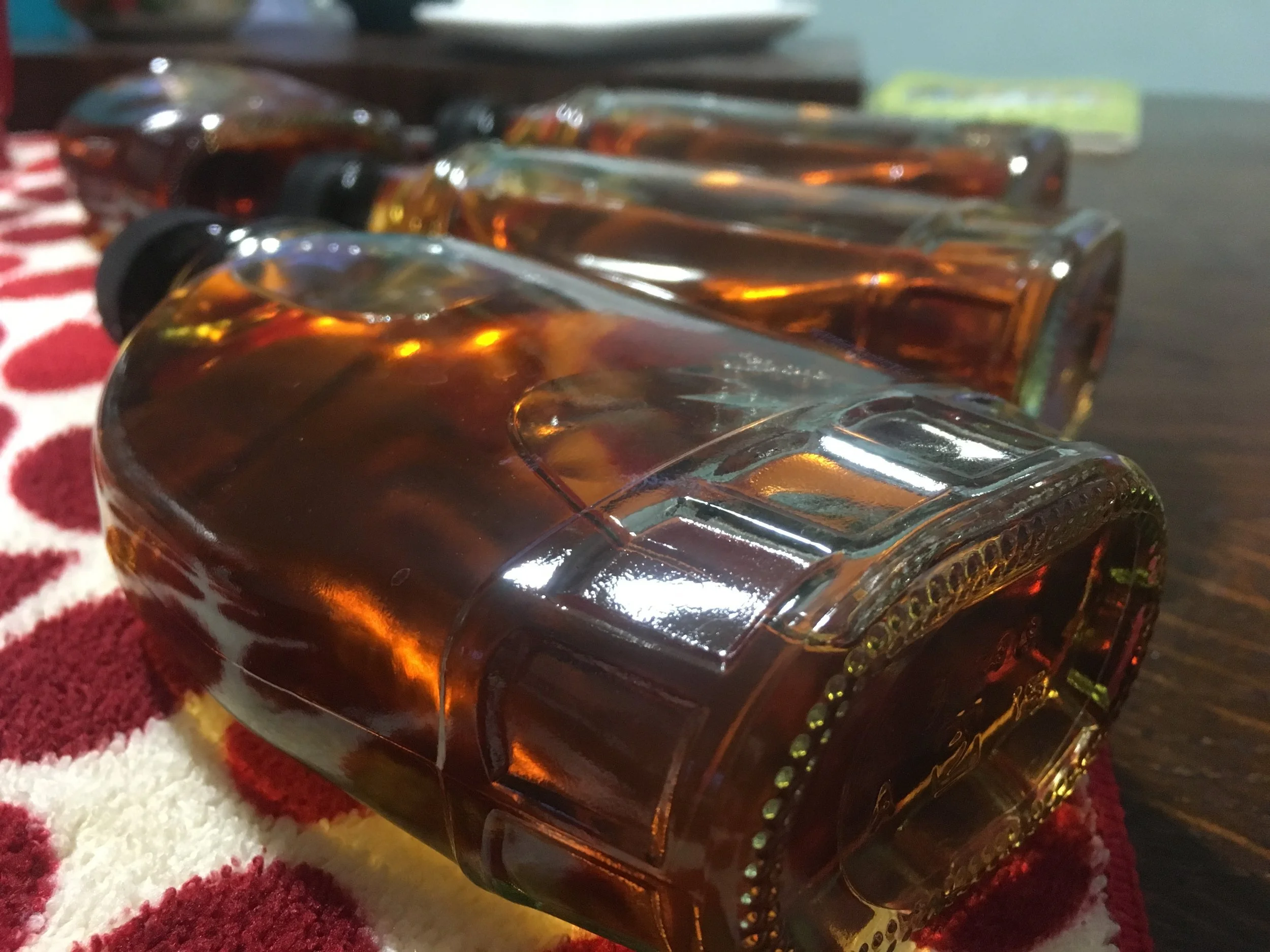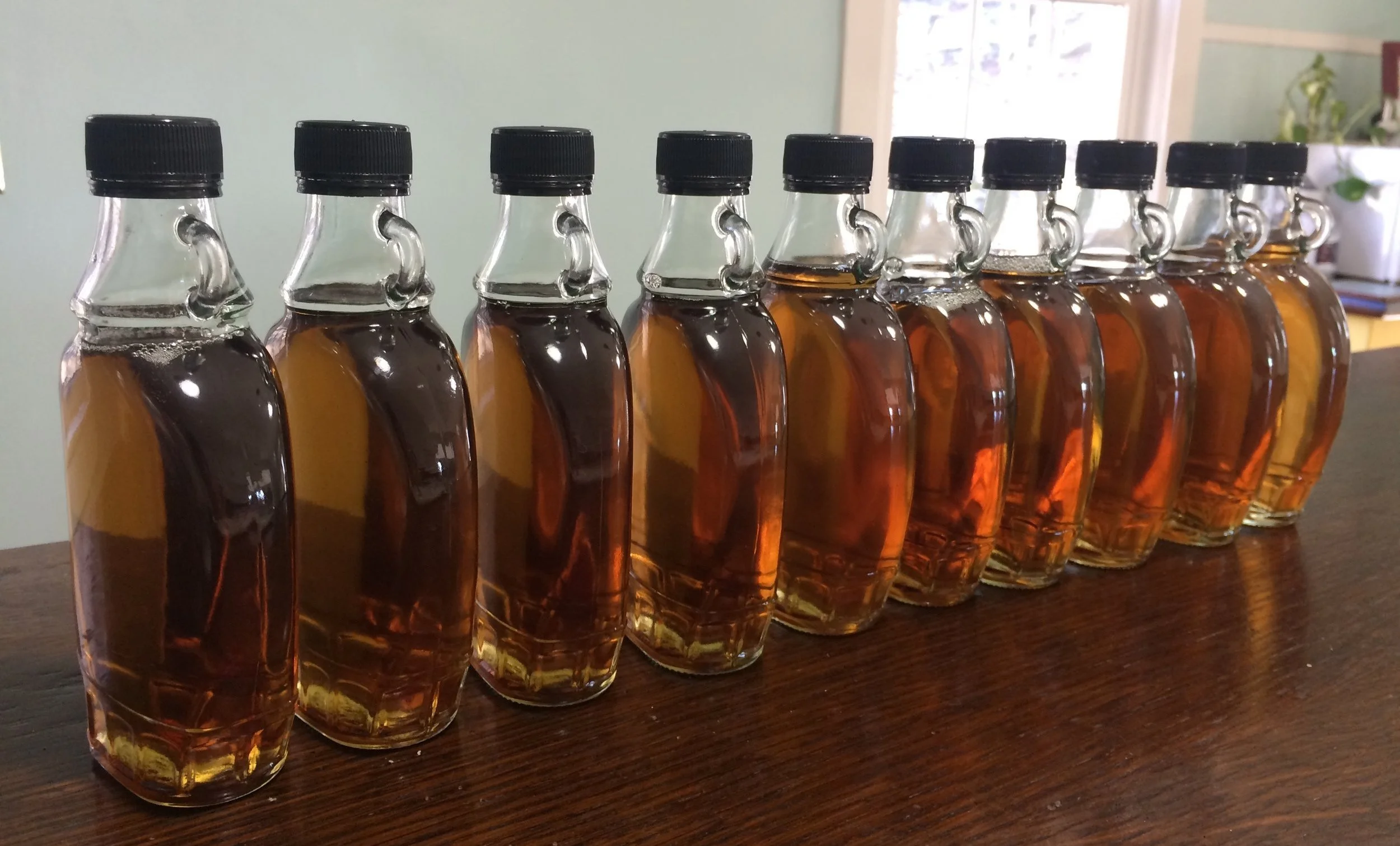Skill Collecting: How to Make Your Own Maple Syrup — Part 2
In Part One of this two part series, we demonstrated the outdoor part of the process. That included collecting the sap and boiling it most of the way down. Now for the indoor part. Some Maple-sugaring people just call this “finishing” the syrup, for, uh, obvious reasons.
This is the equipment you’ll need for finishing your maple syrup. Everything is either stainless steel or glass.
From left to right we have a funnel, a syrup testing cup, a hydrometer, candy thermometer, and glass bottles. Also notice both a paper, disposable pre-filter cone (kind of like a coffee filter), and a reusable cloth filter bag.
There are many suppliers online for syrup bottles. Alternatively, you could use mason jars. We use syrups bottles because sometimes we give them as gifts and they look more “official”. Just make sure you sterilize the bottles and caps with boiling water. Syrup is really quite sensitive to bacteria.
When you finished the boiling the sap outside in your evaporator, you’ll want to finish boiling inside. Between those two steps, it’s a good idea to filter the sap one time through a paper filter. We got ours on Amazon here, but I’ve even heard of some people using coffee filters.
After filtering, the sap may look like syrup and smell like syrup, but it still has too much water content to be syrup so you have to keep boiling. Put in a candy thermometer to keep an eye on the temperature. When it gets to around 7 degrees hotter than the boiling point of water at your elevation, it’s pretty much syrup.
After filtering, the sap may look like syrup and smell like syrup, but it still has too much water content to be syrup so you have to keep boiling. Put in a candy thermometer to keep an eye on the temperature. When it gets to around 7 degrees hotter than the boiling point of water at your elevation, it’s pretty much syrup.
In addition to temperature checks, you should try to test the density of the liquid. When it gets to a specific density it’s officially syrup. Pour some of the sap/syrup into the testing cup when it’s getting close to temperature and slowly place in the hydrometer. They’re very delicate instruments. DON’T DROP IT IN! Ask me how I know.
Just follow the instructions with your hydrometer to test if the syrup is finished. We got ours at Tractor Supply.
Pour the sap into the “test tube” to check its thickness.
When it floats at the red line, it’s done!
Once the sap is at the right density, it’s officially syrup. But you’re not done yet. You need to filter it again. We did a test once to see how much filtration is needed. The picture below show from left to right: paper and cloth filtration, double paper filtration, and single paper filtration. You can see the difference in the bottom of the bottle and the overall clarity. All that “gunk” in the bottom is sugar “sand”, or more properly “Nitre”.
Filtering should be done immediately when the sap is ready because hot syrup filters much better than cold syrup. Here we’re running it through the cloth cone filter lined with a paper filter. Of the methods we’ve tried, this give us the clearest syrup.
After filtering the syrup this time, it gets bottled. It’s important that the syrup is still hot. That sort of helps with further insuring a sterile environment in the bottle. Once capped, lay the bottles down so the inside of the cap gets sterilized too.
This was a batch we did just the other day. These started as 37 gallons of maple sap from our backyard. It’s a lot of time and work, but having all of this finished syrup is so worth it. It’s far better than store-bought “syrup” and it’s rewarding to make stuff from your own land.
This article was transferred from my previous site. Here are what others said at the time of the original writing…
“Yours looks awesome!! It makes me really miss ours from last year we used up. I really wish I had time this year to do it again, but maybe next year...
(If you have any “extra”, I’d be willing to buy some!) ;)
Great tutorial.” - Roger
“Wow! That must be delicious! Very neat to see how much work goes into producing real syrup!” - OSchrock


